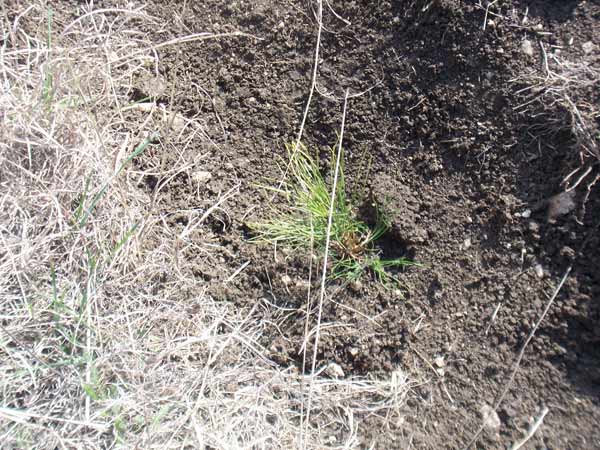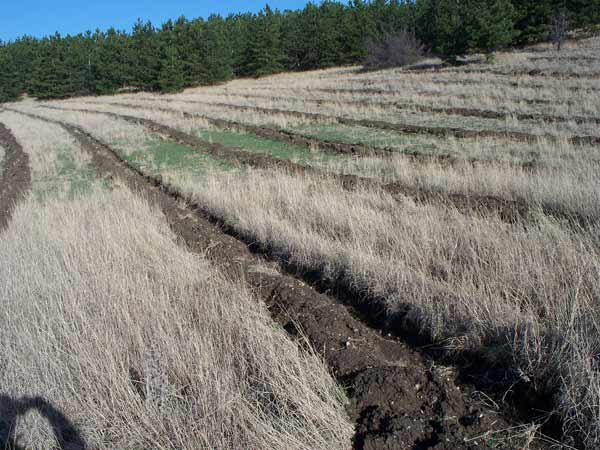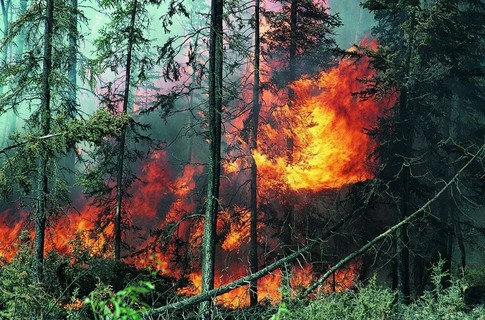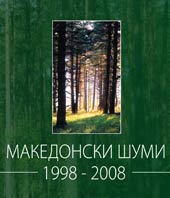About woods
History of Forestry in Republic of Macedonia
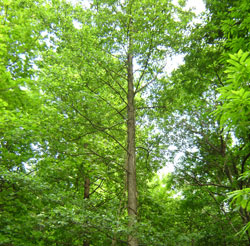 In distant past the territory of Republic of Macedonia and the Balkan Peninsula was covered with dense and impassable forests. The demographic development of population and the constant aspiration for survival urged people to maximum exploitation of nature. The woods were constantly being destroyed by burning and cutting down in order to get cultivable areas and pastures.
In distant past the territory of Republic of Macedonia and the Balkan Peninsula was covered with dense and impassable forests. The demographic development of population and the constant aspiration for survival urged people to maximum exploitation of nature. The woods were constantly being destroyed by burning and cutting down in order to get cultivable areas and pastures.
Constant migration of the population in this area which has started during Hellenic and Roman times, through Byzantine and Ottoman Empire and is still in progress even now in the form of economic migration, led to complete negligence and oblivion of these forested areas. Under the influence of biotic and a biotic factors these surfaces became eroded, degraded and turned into barren grounds.
The Republic of Macedonia is situated in the middle of the Balkan Peninsula between 40° 50' up to 40° and 20' north geographic width, 20° 27' and 23° 05' east geographic length, at total surface of 25.713 км2. The distance to the Aegean Sea is about 60 km air line and from the Adriatic sea 80 km. Out of the total surface of Republic of Macedonia, 36 per cent are surfaces covered with wood.
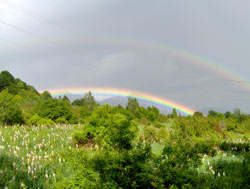 People and forests have always been linked with unbreakable connection of mutual dependence and supplement.
People and forests have always been linked with unbreakable connection of mutual dependence and supplement.
Forests were witnesses of the human development and they were always part of people’s surrounding. That is why there is a forest cult in all cultures. Forests are magnificent gift of nature. Since distant times it has aroused admiration and fear and made people think that forests have some incomprehensive power and force. This force comes from the air it produces, from the shades it provides and from the springs that flow through its greenness. Forests are the pillars of the eco system. That is why they should be protected and looked after.
There are no written documents from the past concerning the forestry development in Macedonia, so there is no sufficient data or some valid knowledge about the treatment of the forests during different periods in history.
However, according to some researches, regardless the period, the social and the political structure, things such demographic development of population, industrial and economic development were ones that dictated increased needs for technical and fire wood. This led to destructive and extensive approach towards forests. They were simply cut off and destroyed.
The first recorded material involving forests on the territory of the Republic of Macedonia is found in the writings of the well known Turkish writer and historian Evlija Celeblija. In his travels accounts, passing through the former territory of Macedonia which was within Ottoman Empire, he wrote that while passing through the area near Sveti Nikole with his caravan they needed to hire local people to cut down the woods so they could pass freely.
If this is true it is an undisputed fact that “Ovce Pole” area was rich with woods which, unfortunately, is not the case nowadays.
It is supposed that the reasons for permanent and partial vanishing of forests from some parts in Macedonia are:
- Intensive deforestation in areas by and around the river Vardar. This was suitable because they used the river to transport the wood to Thessaloniki, which was then used to meet the needs of the Ottoman Empire.
- One of the main reasons for cutting down woods was the production of wood charcoal used for heating baths and splendid rooms of masters and begs in winter in some big cities such as Skopje, Bitola, Veles, Kumanovo and etc.
- The need for wood by the local population, for firewood, technical material or for leaves used for feeding domestic animals.
- Deforestation by cutting down or burning whole forests on flat places in hilly- mountainous regions for the purpose of getting cultivable areas.
- Fires in that time which were started either intentionally, due to negligence or by a thunder as a natural phenomenon.
The first written document dates back from 1858 during the Ottoman reign, and it is called the Ramadan Law. It refers to nature, woods, pastries and waters. In 1869 the Shevalie law was implemented and another one was made in 1894. These laws regulated: village woods, private woods and monastery-clerical woods. Property ownership to these parcels was regulated by issuing ownership documents. These Laws also dealt with woods planned for cutting down, prohibition for cutting down and grazing in young woods, collection of taxes, and other regulations referring to forests which were conducted up to 1905.
From today’s point of view we can not be sure how and to what extent these regulations were implemented and obeyed during that period. However it was a new beginning for regulation of rights, obligations and treatment of forests, of which some traces can be found even today such as the terms “vakavski sumi” and Turkish deeds.
Then a difficult period in the Balkan starts - political wars and economic crises. Ilinden uprising, Young Turk revolution, Balkan wars and the First World War. Needless to say – forests were not treated respectively.
Immediately after foundation of Kingdom SHS in 1922 the first Law on Forestry was made. In 1929 the Kingdom was divided in regional units of which one was called Vardar regional unit and was the territory which occupies most of today’s Republic of Macedonia. A great part of rights and obligations concerning forests were transferred to regional units. The regional units through districts, assemblies of their authorities- the national councils, made legal provisions, regulations and decrees for treatments of forests. This period marks significant improvement in the forestry. It is introduced as an economic branch. The Law on Forests in 1928 regulated ownership of woods as public or private, real estate registry was introduced and deed books were placed in use. Commercial forests were defined which were intended for cutting .There was a prohibition for woods cutting and cattle grazing, mostly in young forests. In 1931 a tax on woods was introduced, and a Law for limitation of the number of goats.
Nevertheless after the Second World War in the Former Yugoslav Republic and in our country, forestry is organized as modern economic branch, which assumes full and intense responsibility in management of forests. The organizational setting of forestry is regulated by legal regulations and their implementation in practical use, as well as all procedures and activities for growing woods, protection, arrangement and using up woods in both social and private ownership.
The establishment of enterprises as forest holdings, which operated professionally in the field of forestry will contribute to development of forestry and permanent managing and utilization of forests.
During the Second World War in 1943 and 1944 and after the war, Bulgarian war prisoners built a solid road from Shtip through village Radanje that led to the mountain Plachkovica. This road will later have an important role in forest managing.
 During the first years after the Second World War the country was in a very difficult state. The authorities from the former Yugoslav Republic and the citizens were facing many problems as a consequence of the war. Devastated country, destroyed industry, economy and infrastructure, broken school and health system, disturbed life standard of the people, with no stable economy or finances. The country experienced the inevitable crash after the war. However, things had to be solved and somehow put to function again. Some things needed repair but most things needed to be completely rebuild. Forestry was disadvantaged as well. But, in comparison to the other economic branches, forestry was in more specific state because in pre war period there was not any significant and constant development in organized and modern forestry. Though the initiative for development of modern forestry comes from the pre war period, significant steps had to be taken after the war. To get it implemented and operational in a practical application, the procedure and time distance of several years had to be undergone. First thing that had to be done was to adopt quality regulations, which will regulate forming of the organizational structure and operation of forestry as an important industry, with all its activities such as: raising forests, cultivation, protection, regulation and exploitation of forests.
During the first years after the Second World War the country was in a very difficult state. The authorities from the former Yugoslav Republic and the citizens were facing many problems as a consequence of the war. Devastated country, destroyed industry, economy and infrastructure, broken school and health system, disturbed life standard of the people, with no stable economy or finances. The country experienced the inevitable crash after the war. However, things had to be solved and somehow put to function again. Some things needed repair but most things needed to be completely rebuild. Forestry was disadvantaged as well. But, in comparison to the other economic branches, forestry was in more specific state because in pre war period there was not any significant and constant development in organized and modern forestry. Though the initiative for development of modern forestry comes from the pre war period, significant steps had to be taken after the war. To get it implemented and operational in a practical application, the procedure and time distance of several years had to be undergone. First thing that had to be done was to adopt quality regulations, which will regulate forming of the organizational structure and operation of forestry as an important industry, with all its activities such as: raising forests, cultivation, protection, regulation and exploitation of forests.
After the war and the liberation, FNRJ was established. The years 1946-1947, within the former SFRY, the Law on Forests was passed according to which the forests were managed by Public Boards. After that, adopting the Rules of Forest Management in 1975, marks the beginning of the first planned forest management. According to this regulation, about 80% of the forest area is covered by Managing elaborates (Plans).
Years 1945-1947, within the frames of SRM, Law on Forests was passed according to which the National councils were in charge of managing with forests. After that, with passing a Rule Book on forest managing in 1975, the planned woods managing begins for the first time. With this rule book, around 80% of wood surface was included with elaborates (Plans).
It is important to state that with the establishment of afforestation fund of bare places in SRM in the period from 1965-1990 about 100 000 hectares of bare areas all over Macedonia were foretasted. For example : forestation of Goce forest-Demir Kapija, Vodno-Skopje forestations from Demir Hisar, Bitola.up to Resen (with merit to our late colleague Janko Vlav from Bitola), forestation in the region of Palanka and another afforested surfaces. During this period in SRM there were:
- The Secretariat of agriculture, forestry and water under which competency were the forests. Thirty forest companies acting as independent legal entities with separate accounts were in charge of the forest managing each of them operating according to the Regulation Book making managing elaborates. Each territorial unit made forest-economic plans that had validity of 10 years.
- Up until 1976 the Macedonian forestry pride was The Institute of Forestry, established in 1676/77 in the village Gorno Vranovci.
- As highly skilled, educational institution for education of professionals in the field of forestry was the Faculty of forestry established in 1947.
- As professional institution for designing and arrangement of forests established in 1952, was the Institute of Arrangement of Forests and Roads-Shumaproekt.


